 W
WDog behavior is the internally coordinated responses of individuals or groups of domestic dogs to internal and external stimuli. It has been shaped by millennia of contact with humans and their lifestyles. As a result of this physical and social evolution, dogs, more than any other species, have acquired the ability to understand and communicate with humans, and they are uniquely attuned in these fellow mammals. Behavioral scientists have uncovered a wide range of social-cognitive abilities in the domestic dog.
 W
WA dog bite is a bite upon a person or other animal by a dog. More than one successive bite is often called a dog attack, although dog attacks can include knock-downs and scratches. Though many dog bites do not result in injury, they can result in infection, disfigurement, temporary or permanent disability, or death. Another type of dog bite is the "soft bite" displayed by well-trained dogs, by puppies, and in non-aggressive play. Dog bites can occur during dog fighting, as a response to mistreatment, trained dogs acting as guard or military animals, or during a random encounter.
 W
WA bark is a sound most commonly produced by dogs. Other animals that make this noise include wolves, coyotes, seals and quolls. Woof is the most common representation in the English language for this sound, especially for large dogs. "Bark" is also a verb that describes the sharp explosive cry of certain animals.
 W
WThe Behaviour and Personality Assessment in Dogs, commonly abbreviated as BPH, is a behavioural assessment developed by the Swedish Kennel Club (SKK) in May 2012 that aims to accurately describe the personality of a dog irrespective of whether it is a working, pet or breeding dog. It was developed with the intention to afford breeders, owners and kennel clubs better knowledge of dog mentality so that they can breed dogs with more favourable behaviour and understand more about their dog.
 W
WBite inhibition, sometimes referred to as a soft mouth, is a behavior in carnivorans whereby the animal learns to moderate the strength of its bite. It is an important factor in the socialization of pets.
 W
WThe Canine Good Citizen (CGC) program, established in 1989, is an American Kennel Club program to promote responsible dog ownership and to encourage the training of well-mannered dogs. A dog and handler team must take a short behavioral evaluation of less than half an hour; dogs who pass the evaluation earn the Canine Good Citizen certificate, which many people represent after the dog's name, abbreviating it as CGC; for example, "Fido, CGC".
 W
WClicker training is an animal training method based on a bridging stimulus in operant conditioning. The system uses conditioned reinforcers, which a trainer can deliver more quickly and more precisely than primary reinforcers such as food. The term "clicker" comes from a small metal cricket noisemaker adapted from a child's toy that the trainer uses to precisely mark the desired behavior. When training a new behavior, the clicker helps the animal to quickly identify the precise behavior that results in the treat. The technique is popular with dog trainers, but can be used for all kinds of domestic and wild animals and small children.
 W
WDog communication is the transfer of information between dogs, as well as between dogs and humans. Behaviors associated with dog communication are categorized into visual and vocal. Visual communication includes mouth shape and head position, licking and sniffing, ear and tail positioning, eye gaze, facial expression, and body posture. Dog vocalizations, or auditory communication, can include barks, growls, howls, whines and whimpers, screams, pants and sighs. Dogs also communicate via gustatory communication, utilizing scent and pheromones.
 W
WCrate training is the process of teaching a pet to accept a dog crate or cage as a familiar and safe location. Advocates claim that dogs are den-dwelling animals and that a crate can become a den substitute. Regardless, most puppies can learn to tolerate crate training if it is introduced properly. The initial stress from being confined can give way to "increased feelings of security, safety, and comfort" after repeated exposure to the crate. Long-term or excessive crate confinement "may lead to emotional and behavioral deterioration over time." On the other hand, if properly done, crate training can play a major role in housebreaking a dog as fast as possible. Ordinarily, it is seen as a way of confining a dog and restricting its movement and freedom. However, crate training can help dogs gain full bowel and bladder control while enjoying treats and comfort. If crate training is not taken seriously, the dog may start soiling around the house.
 W
WThe Defence Animal Training Regiment (DATR) is a training establishment, based in Melton Mowbray, east Leicestershire. It trains animals, of which the most numerous are dogs, for all three armed forces. Its headquarters are also the principal base of the Royal Army Veterinary Corps.
 W
WA detection dog or sniffer dog is a dog that is trained to use its senses to detect substances such as explosives, illegal drugs, wildlife scat, currency, blood, and contraband electronics such as illicit mobile phones. The sense most used by detection dogs is smell. The smell from the detection dogs are more enhanced than the average dog. They are trained to have this great sense of smell. Hunting dogs that search for game, and search dogs that work to find missing humans are generally not considered detection dogs. There is some overlap, as in the case of cadaver dogs, trained to search for human remains. A police dog is essentially a detection dog that is used as a resource for police in specific scenarios such as conducting drug raids, finding missing criminals, and locating stashed currency.
 W
WDog aggression expressed by dogs is considered to be normal behaviour and various types of aggression are influenced by a dog's environment and genetic predisposition. Dogs commonly display possessive aggression when defending resources or themselves.
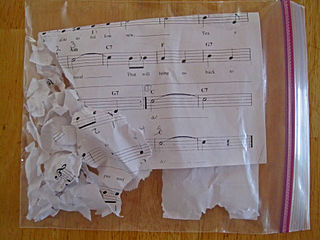 W
W"The dog ate my homework" is an English expression which carries the suggestion of being a common, poorly fabricated excuse made by schoolchildren to explain their failure to turn in an assignment on time. The phrase is referenced, even beyond the educational context, as a sarcastic rejoinder to any similarly glib or otherwise insufficient or implausible explanation for a failure in any context.
 W
WA bite tug is an important drive and retrieve building tool used in dog training. It is used for police, military and Schutzhund dog training. Bite tugs are perfect for puppies but can be used for training adult dogs as well. A bite tug is a good alternative to a solid rubber ball. The latter one is hard on dog's teeth and in situation when a puppy is accidentally hit in the head with a hard rubber ball he can lose drive. If the same dog is hit by a tug he disregards the situation and keeps chasing in drive. Bite pillows are larger tugs which are used for precision bite work training. They are safer and increase accuracy in bite work.
 W
WDog surfing is a type of surfing maneuver involving dogs that are trained to surf on surfboards, bodyboards, skimboards, windsurf boards or to bodysurf. Historically, surfing dogs have been documented as occurring as early as the 1920s in the United States. Competitions and exhibitions that feature surfing dogs have occurred in various coastal areas of the United States, such as Del Mar, California, Imperial Beach, California and Jupiter, Florida.
 W
WCats and dogs have a range of interactions. The natural instincts of each species lead towards antagonistic interactions, though individual animals can have non-aggressive relationships with each other, particularly under conditions where humans have socialized non-aggressive behaviors.
 W
WFetch is a pet game where an object, such as a stick or ball, is thrown a moderate distance away from the animal, and it is the animal's objective to grab and retrieve it. Many times, the owner of the animal will say "Fetch" to the animal before or after throwing the object. The game is usually played with a dog, but in rare instances cats, especially younger cats, have been known to engage in fetch behavior.
 W
WA flirt pole, also called a "flirt stick", is a piece of exercise equipment for dogs that entices a dog to chase a fast moving lure. This equipment is often used to physically condition a dog and improve his or her skills for better performance in certain competitions such as lure-coursing or Schutzhund. It is often used simply to get a dog to exert a lot of energy in a small space.
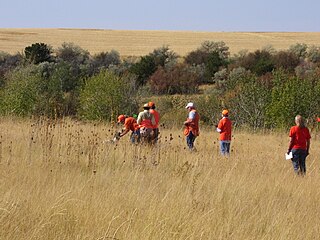 W
WGun dogs are used to hunt all sorts of game. Some are used in the pursuit of big game, although the majority of working gun dogs are used to hunt upland game birds.
 W
WHousebreaking or house-training is the process of training a domesticated animal that lives with its human owners in a house or other residence to excrete outdoors, or in a designated indoor area, rather than randomly inside the house following its instinctive behaviour.
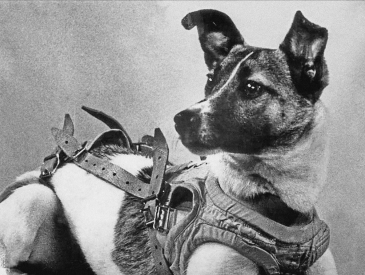 W
WLaika was a Soviet space dog who became one of the first animals in space, and the first animal to orbit the Earth. Laika, a stray mongrel from the streets of Moscow, was selected to be the occupant of the Soviet spacecraft Sputnik 2 that was launched into outer space on 3 November 1957.
 W
WThe National Explosives Detection Canine Team Program is a program administered by the Transportation Security Administration which uses law enforcement and TSA-run explosive detection dog teams to detect explosives in transportation environments.
 W
WNew Skete is the collective term for two Orthodox Christian monastic communities in Cambridge, New York :The Monks of New Skete, a men's monastery founded in 1966, and the Nuns of New Skete, a women's monastery founded in 1969.
 W
WAn obedience school is an institution that trains pets how to behave properly. When puppies are young and in the first stages of training, they are often taken by their owners to obedience schools. Training usually takes place in small groups. In addition to training pets themselves, obedience schools also teach pet owners how to train, praise, and scold their pets themselves. Schools can teach at a various set of levels, ranging from the very basics for puppies to more advanced for competition level dogs. Most training in schools however, focuses on making dogs listen through basic commands such as sit, stay, lie down, etc. Prices for schools range between $1,000 and $2,500.
 W
WOlate Dogs is an American dog trick act featuring father-and-son trainers Richard and Nicholas Olate. The group won the seventh season (2012) of America's Got Talent, claiming the US$1,000,000 first prize.
 W
WPack is a social group of conspecific canines. Not all species of canids form packs; for example, small canids like the red fox do not. Pack size and social behaviour within packs varies across species.
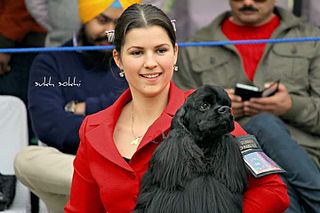 W
WAndrea Petrova is an All Breed Professional Dog Show Handler from the city of Ostrava, Czech Republic.
 W
WPrey drive is the instinctive inclination of a carnivore to find, pursue and capture prey. The term is chiefly used to describe and analyse habits in dog training.
 W
WA professional handler, sometimes called a professional dog handler is a person who trains, conditions and shows dogs in conformation shows for a fee. Handlers are hired by dog owners or breeders to finish their championship, or if finished, to show in the Best of Breed class as a "special".
 W
WSeparation anxiety in dogs describes a condition in which a dog exhibits distress and behavior problems when separated from its handler. Separation anxiety typically manifests within minutes of departure of the handler. It is not fully understood why some dogs suffer from separation anxiety and others do not. The behavior may be secondary to an underlying medical condition. With chronic stress, impairments to physiological health can manifest. Increased stress in the dog alters hormone levels, thus decreasing natural immunity to various health problems. A visit to the veterinarian is always recommended if a dog's behavior changes suddenly.
 W
WA shepherd's whistle is a specialized, modulatable, variable-pitch whistle used to train and transmit commands to a sheepdog to aid in herding. Unlike other whistles, they are placed inside the mouth and the sound is controlled by the placement of the tongue. Like tin whistles, while simple, they can be used as musical instruments in their own right.
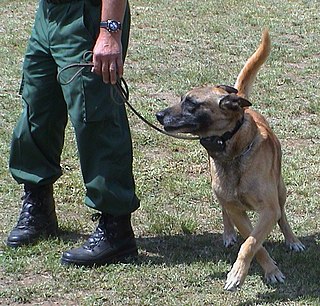 W
WA shock collar or remote training collar is any of a family of training collars that deliver electrical stimulation of varying intensity and duration to the neck of a dog via a radio-controlled electronic device incorporated into a dog collar. Some collar models also include a tone or vibrational setting, as an alternative to or in conjunction with the shock. Others include integration with Internet mapping capabilities and GPS to locate the dog or alert an owner of his/her whereabouts.
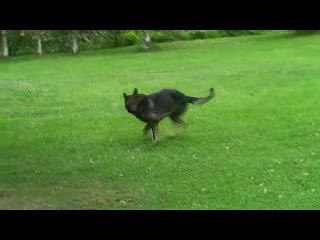 W
WTail chasing is a behaviour exhibited in dogs that is characterized by spinning in tight circles in either direction, and can be slow and focused on the tail or fast and unfocused. It is a compulsion similar to those seen in humans suffering from OCD and it can be quite disruptive to the lives of the dogs themselves, as well as their owners. Some causes have been suggested, including genetic factors, and environmental factors that vary depending on the individual dog. Furthermore, treatment options include drugs that decrease the frequency of tail chasing by targeting the underlying mechanisms, and behavioural changes regulated by the dog's owners.
 W
WTraining Dogs the Woodhouse Way is a British television series presented by Barbara Woodhouse first shown by the BBC in 1980. It was taped in 10 episodes at Woodhouse's home in Hertfordshire, England. The show was also internationally syndicated.
 W
WTreeing is a method of hunting where dogs are used to force animals that naturally climb up into trees, where they can be assessed or shot by hunters. The idiomatic phrase "Barking up the wrong tree" comes from this practice.
 W
WA dog whistle is a type of whistle that emits sound in the ultrasonic range, which most humans cannot hear but some other animals can, including dogs and domestic cats, and is used in their training. It was invented in 1876 by Francis Galton and is mentioned in his book Inquiries into Human Faculty and its Development, in which he describes experiments to test the range of frequencies that could be heard by various animals, such as a house cat.